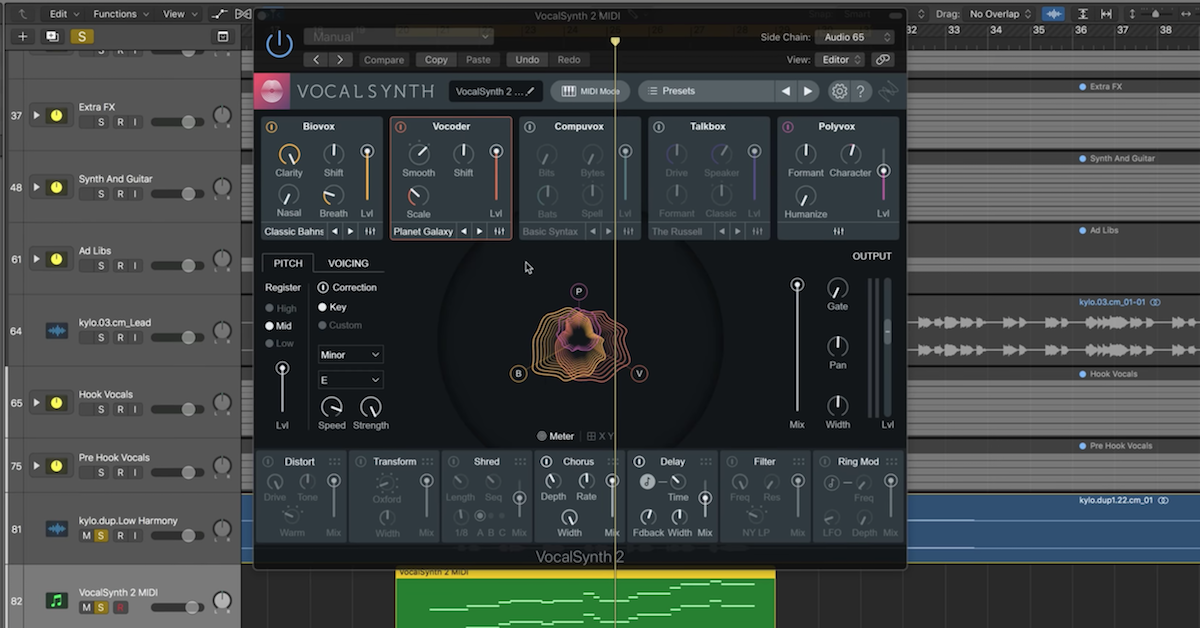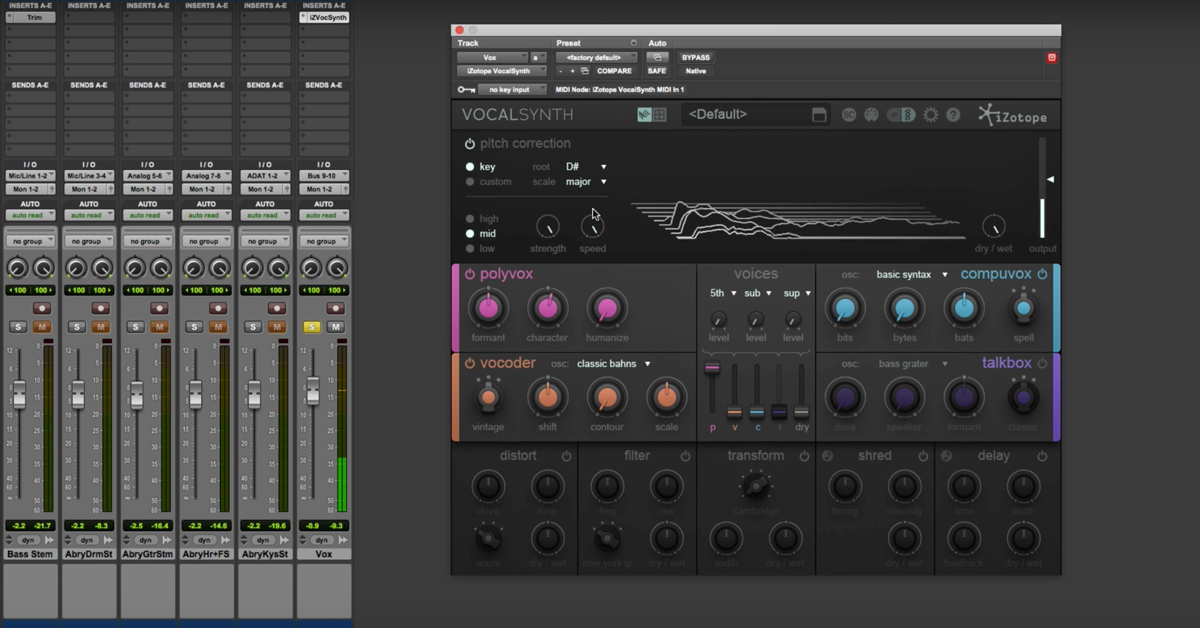Intro to Microtonality (+ Interview with Brendan Byrnes)
Article Content
Microtonality is a mysterious and often misunderstood subject that can come laden with complex pitch ratios, unfamiliar terminology and mind-numbing esoterica. In this article, I hope to shed some light on the basics for those looking to explore new sonic colors in their work. I’ll talk about some common terminology, alternate tuning systems, microtonal instruments, pioneering artists & composers in the field and some practical examples using the alternate tuning functionality found in Logic Pro. Finally, I’ll provide a transcript of an interview with microtonal guitarist Brendan Byrnes, who has been exploring microtonal music with custom fretted guitars for close to a decade.
Standard Tuning vs. Just Intonation
Before talking about microtonal systems we should define the typical tuning system used in Western music known as 12 tone equal temperament based on 12 equal divisions per octave, or 12 EDO. EDO is also sometimes expressed as TET (tones equal temperament) or simply ET (equal temperament).
Somewhat ironically — “The standard twelve-tone equal temperament (ET), which was originally invented in ancient China and rediscovered in Europe in the 18th century, is determined by two additional conditions. Firstly the octave is divided into twelve semitones. Secondly the octave, the most fundamental of all intervals, is postulated to be pure (beatless), as described by the frequency ratio 2:1” (source)
In contrast to 12 EDO, just intonation (JI) uses precise integer multiples based on the harmonic series to produce “pure” intervals without beats. Beating occurs when the ratios are not based on whole numbers, a concept similar to slightly detuning two oscillators in a synth or strings on a guitar. Beatless intervals seem to lock tightly together as the frequencies are exactly harmonically related.
The 12 EDO system was largely adopted in Western music since it has the distinct advantage of allowing the composer to modulate keys without having to retune instruments each time. Just intonation only really works in the key of the fundamental if you are working with traditional diatonic harmony.
Half Steps and Cents
You might be wondering what a microtonal pitch sounds like in context. Well, if you’ve ever bent a guitar string you already know. Blue notes often lie in-between the standard pitches in a 12 EDO scale. So bending a string allows you to produce these pitches without retuning the whole instrument.
Pitches can be described as being above or below a note compared to the 12 EDO scale by a certain value expressed as a percentage of a half step or in cents. For example, there are 100 cents between two adjacent keys on a piano like C and C#. The pitch C +50 cents would be a quarter tone or half the intervallic distance to C#. This could be notated as a quarter-tone sharp. In music that sticks to quarter-tone variations there are other accidentals as shown below:
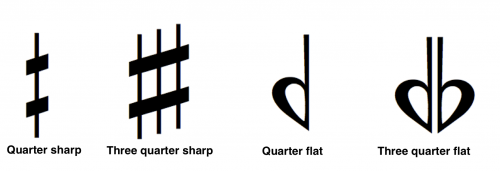
But microtonal tunings can get a lot more complex than this. It is not uncommon to have tones altered by any number of cents. And while equally dividing an octave is a common approach, there is nothing to say it has to be equally divided at all. Notation has always been a challenge for microtonalists but music is not always communicated by notation. Sometimes the harmonic colors produced by Eastern instruments, for example, are simply learned over generations and understood by musicians — the result of years of practice, familiarity and improvisation.
When alterations of traditional notation or the limitations of a particular instrument are not practical, new instruments and musical languages must be developed to accommodate the tuning system(s).
Other Terminology
An exhaustive list of the microtonal lexicon is well beyond the scope of this article. Luckily, there are resources like the Encyclopedia of Microtonal Music Theory by Joe Monzo available online, from which most of the definitions below have been culled.
Meantone – “can refer to both a specific tuning or…[a] family of temperaments, of which that tuning is a member…Meantones are always considered to be octave-equivalent…” (Monzo) “Both Meantone and Pythagorean temperaments are created by stacking perfect 5ths. Meantone temperaments slightly flatten the perfect 5th in order to get major 3rds more in tune. The major 3rds are still slightly sharp, but in Pythagorean temperaments 3rds are even sharper”. (Brendan Byrnes)
Comma – “One of several small intervals with a size of about an eighth-tone [= 0.25 semitone = 25 cents]. They occur in a system of just intonation, or when considering intervals as ratios.”
Limit – “A number that is characteristic of, and is meant to quantify in some sense the complexity of, the ratio or ratios associated with the tuning (pitch-height, frequency) of some musical structure.”
Odd Limit – “The n-limit is the set all ratios of all odd numbers no greater than odd-number n.”
(Example of 5-limit ratios: 1/1, 6/5, 5/4, 4/3, 3/2, 8/5, 5/3).
Prime Limit – “A pitch system in just intonation where all ratios are of integers containing no prime factors higher than prime-number n is said to be an n-limit system…a 5-limit system is often described as classic just intonation.”
Other Divisions of the Octave and Custom Instruments
When you start exploring divisions of the octave other than the standard 12, things start to get really interesting. Other variations include: 5, 7, 19, 22, 24, 27 and 31 EDO to name a few. These tunings can produce all sorts of intervallic colors not possible in standard tuning.
Composer Harry Partch famously used scales that divided the octave unequally into 43 tones based on the harmonic series and created the instruments necessary to play his work such as the Quadrangularis Reversum and Chromelodeon (seen below).
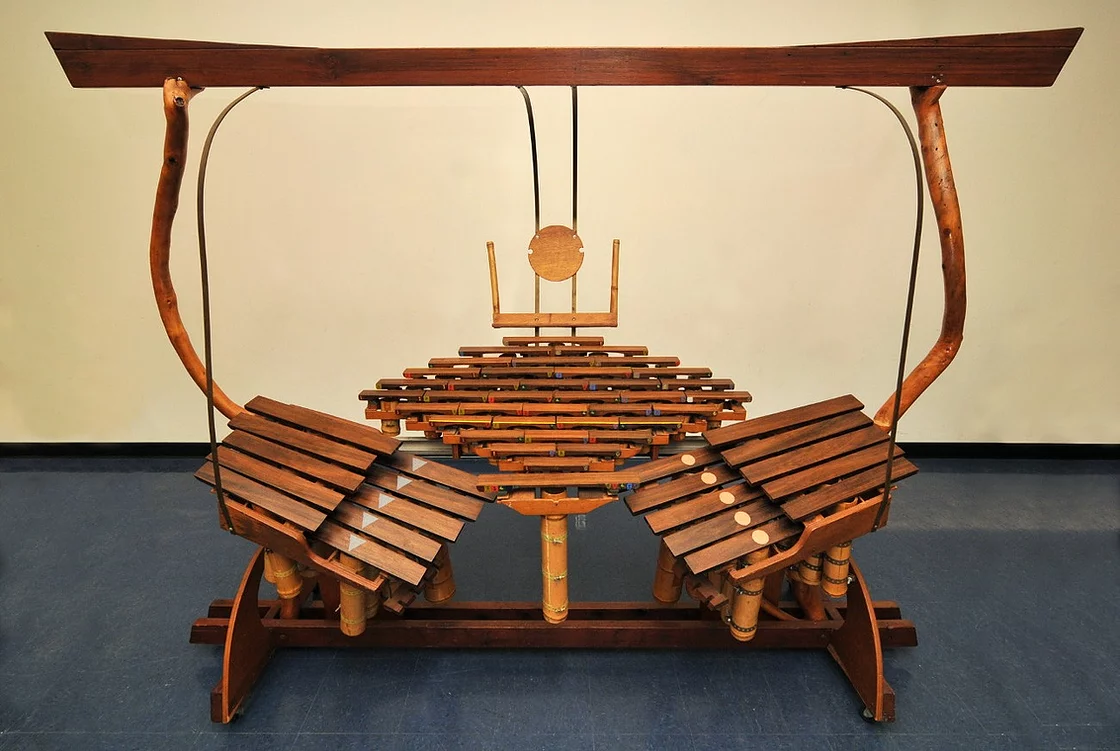
Quadrangularis Reversum
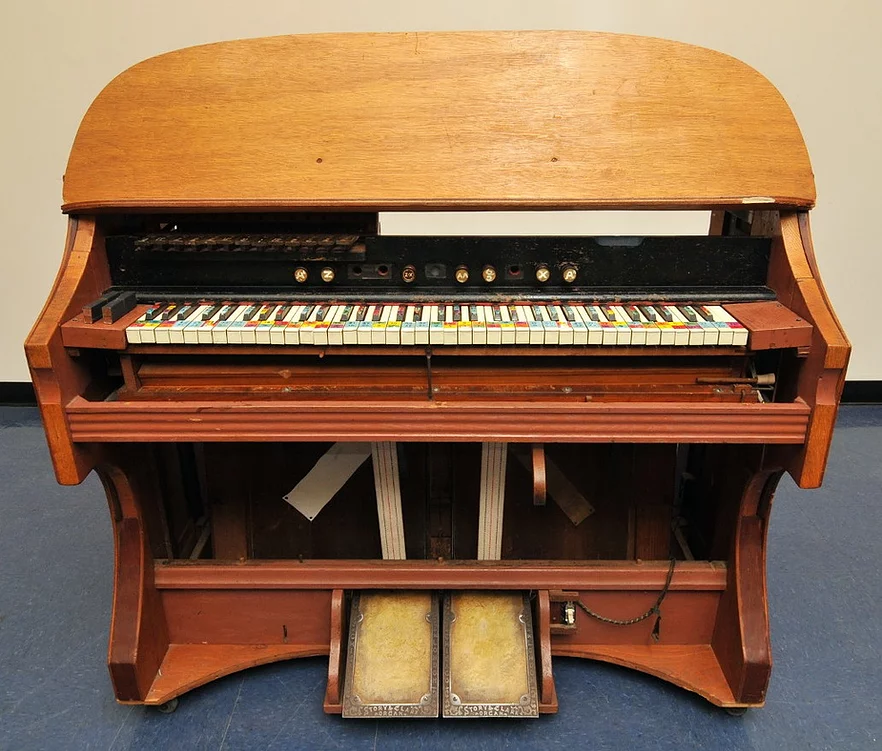
Chromelodeon
Iannis Xenakis invented the Sixxen, a group of 6 mallet instruments created especially for his work Pléïades. Each instrument is slightly detuned. His indications state that each instrument should have “19 metal sounds, which need not be tuned either chromatic or diatonic. Each of the metal scales should not be exactly identical from player to player but should vary slightly.”
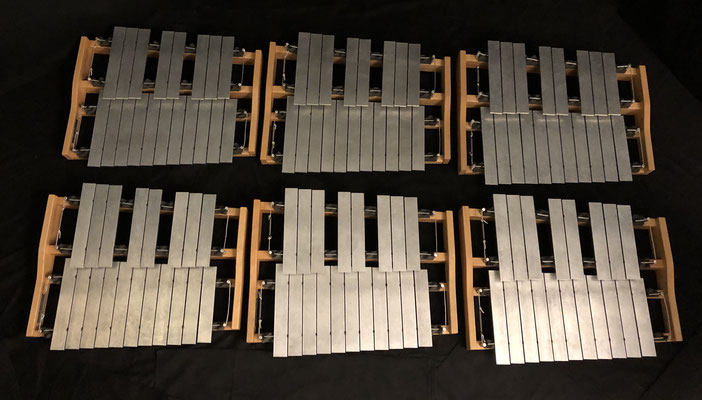
Sixxen
A contemporary luthier named Ron Sword has carved out a respectable niche in the world of microtonal guitar building. His work includes all sorts of EDO configurations and some that simply defy categorization.
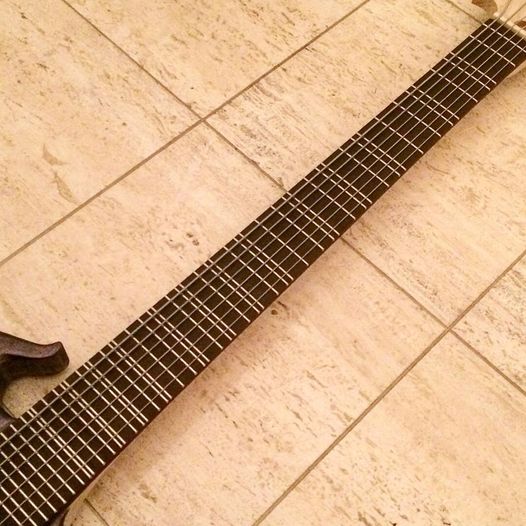
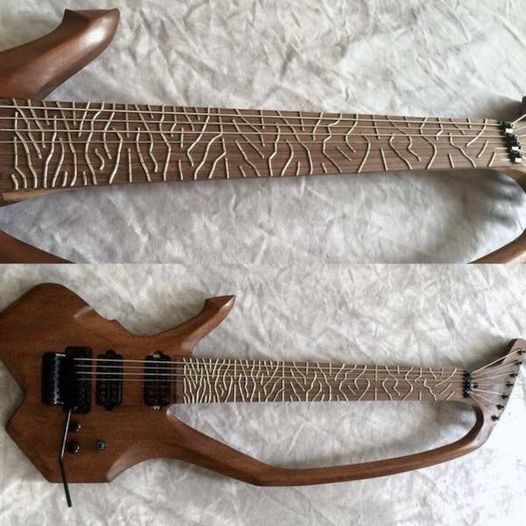
Artists Using Microtonal Approaches
“Radiohead has used microtonal string arrangements in its music, such as on “How to Disappear Completely” from the album Kid A.” (source)
“In 1986, Wendy Carlos experimented with many microtonal systems including just intonation, using alternate tuning scales she invented for the album Beauty In the Beast. “This whole formal discovery came a few weeks after I had completed the album, Beauty in the Beast, which is wholly in new tunings and timbres.” (source)
“Aphex Twin has used microtonal tunings on albums as far back as 1994.” (source)
In addition to Harry Partch and Iannis Xenakis mentioned above, there has been a slew of contemporary composers that have explored microtonality including: Charles Ives, Harry Partch, Henry Cowell, John Cage, Benjamin Johnston, Henk Badings, Karlheinz Stockhausen and Krzysztof Penderecki. (source)
Limitations of MIDI and Microtonal Tuning
While MIDI is designed to produce notes from a 12 EDO scale, it is possible through pitch bending to produce the notes in-between. Certain software will help facilitate this process.
Logic Pro has some functionality that allows for alternate tuning systems to an extent. Found under File/Project Settings/Tuning is an interface to globally detune MIDI notes in a session. You can also choose from a robust menu of tuning choices.
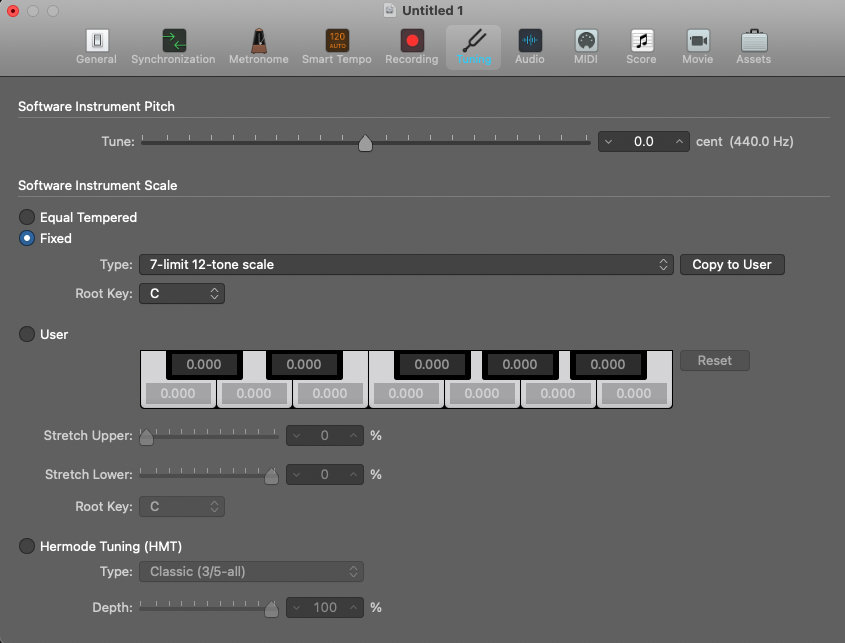

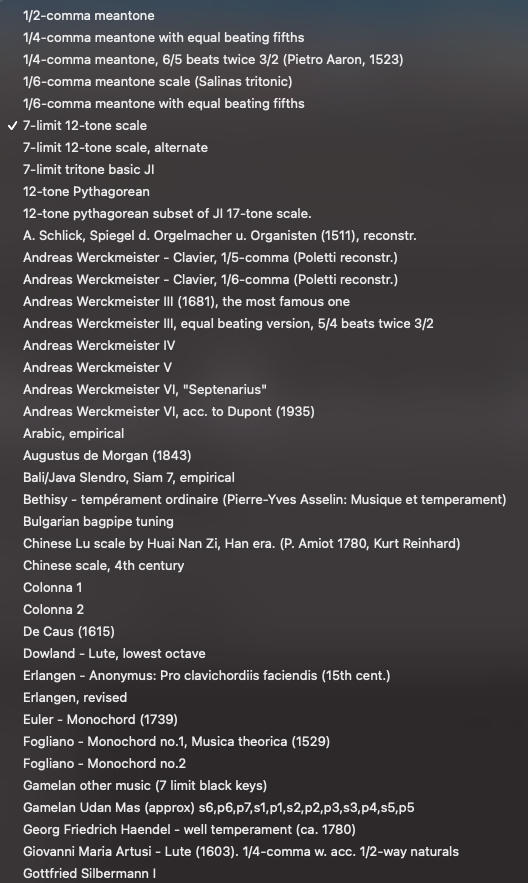
As an example, below are two scales starting around middle C using only white keys in two tuning systems.
The obvious limitation here is that there are only 12 keys, so if you want to use more than 12 EDO, you’ll have to pick and choose which ones to keep and which is ignored. Likewise, using less than 12 will result in duplicated pitches. This might or might not matter depending on the context, but if you are looking to experiment with new colors and you already own Logic, it’s a great way to start.
Software and Resources
The Huygens-Fokker Foundation has a website dedicated to microtonal music, history, and research. It is packed with artist links and other resources. A great place to start your journey into microtonalism.
The Tonalsoft Encyclopedia by Joe Monzo provides quick access to all the tuning terminology you will ever need. A fantastic and thorough resource!
The Arithmetic of Listening by Kyle Gann. If you only read one book on tuning theory and microtonal concepts I suggest it be this one. Gann offers a history and survey of major microtonal concepts using mathematics that are accessible for the motivated reader. His self-admitted intention is to entice the reader to explore alternative tuning theory in “defiance of people that are (1) heavily invested in the status quo, (2) afraid of change, and (3) afraid of truth.” (Gann 13).
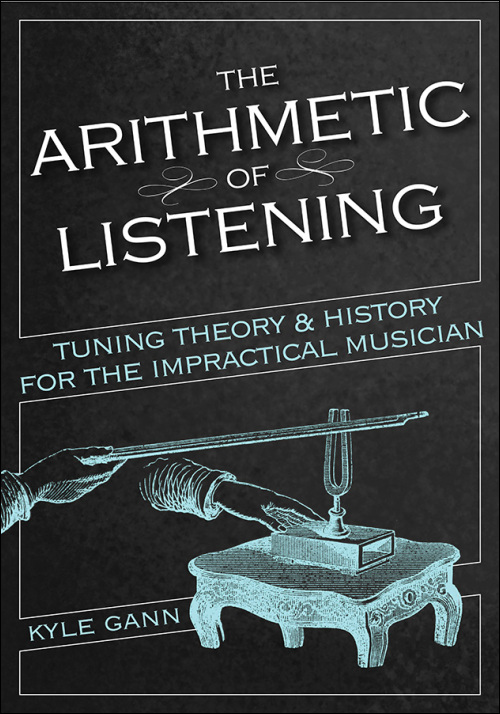
Xenharmonic Wiki is another great educational resource dedicated to alternative musical tuning.
Scala is freeware created by Manuel Op de Coul in the Netherlands and is intended for experimentation with alternate tunings. You can export tunings to a variety of virtual and hardware instruments and software such as the Korg M1, Dave Smith Prophet, Native Instruments synths, Max/MSP, and Omnisphere to name just a few.
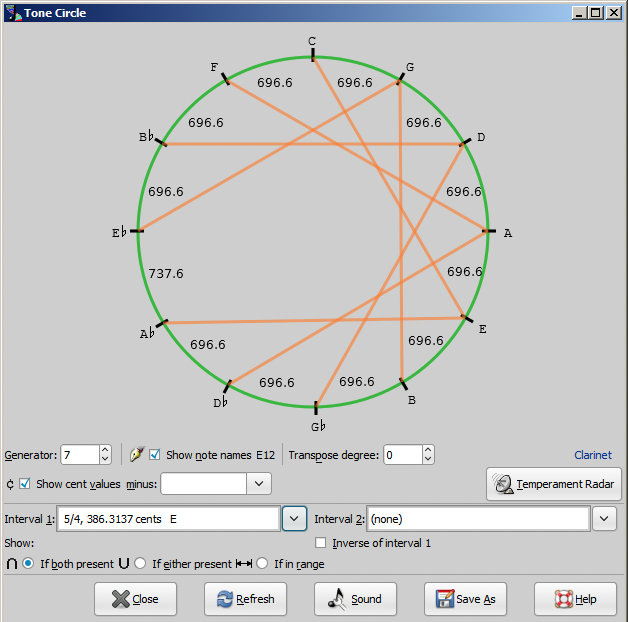
Microtonal Software – a site that offers online conversion tools for generating .tun files from .scl files (scale file generated using Scala, mentioned above).
Max/MSP – a graphic-object oriented language that offers a few 3rd party packages that address microtonality including:
- Bach is a computer-aided composition package developed by Andrea Agostini and Daniele Ghisi that works in the Max/MSP environment and has extensive microtonal capabilities.
- Timo Hoogland has written some externals for Max/MSP that can convert Scala files to tunings using MIDI notes and pitch bend data, or directly to the frequency of an audio signal. He also includes a microtonal pitch GUI slider that updates its appearance as new Scala files are loaded.
MTS-ESP Suite by ODDSound in collaboration with Aphex Twin
Perhaps the most exciting software I came across in researching this article is the MTS-ESP Suite, developed as a collaboration with UK-based startup ODDSOUND and Aphex Twin (aka Richard D. James) released this year (2021).
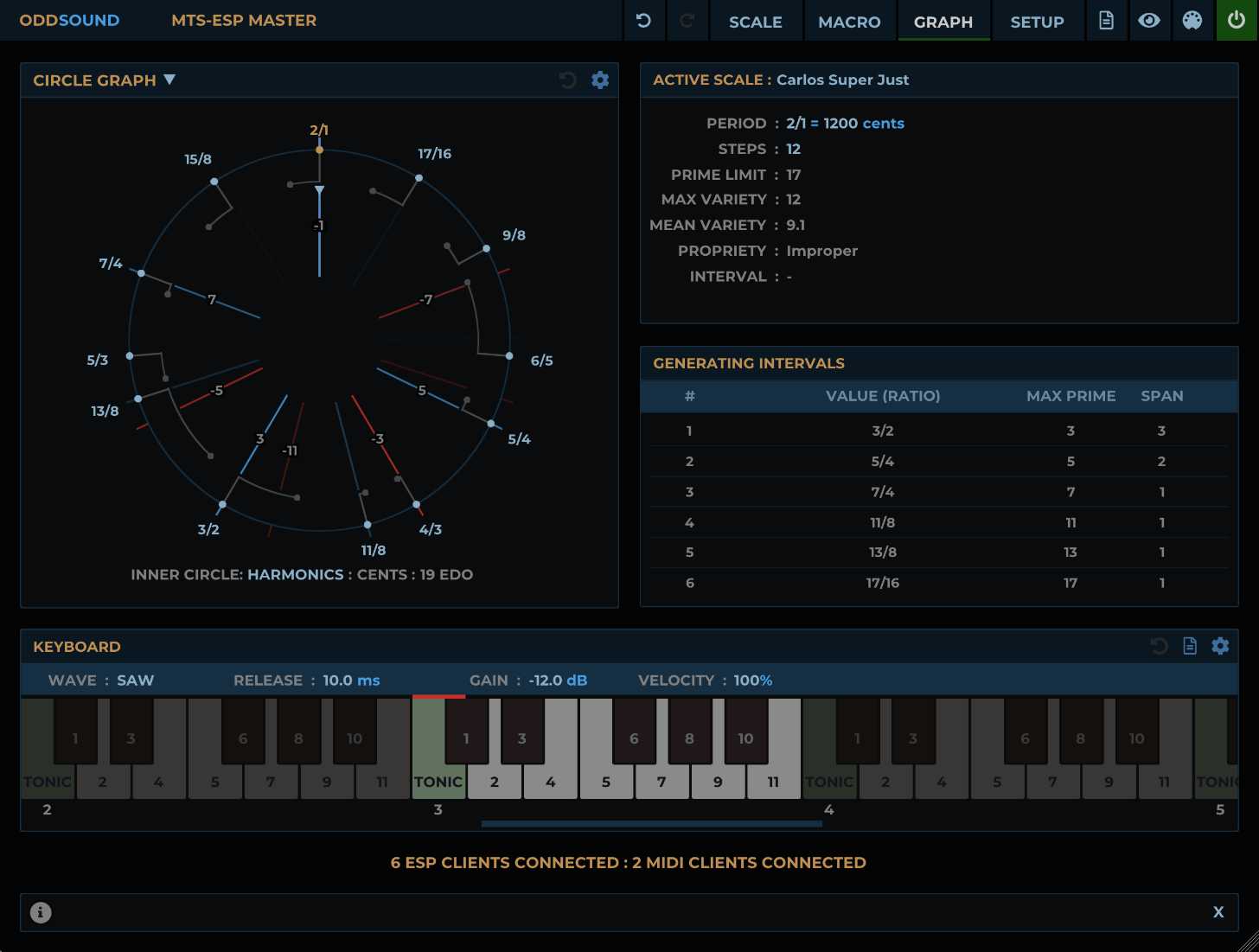
This is a plugin that generates microtonal tuning information and communicates it to all the virtual instruments in a DAW. Several major synth developers have coded access in their products to allow communication regarding tuning with the MTS plugs including U-He, Xfer Records, Expert Sleepers, Arturia and New Fangled Audio to name a few. Of course, many synth developers have existing microtonal tuning capabilities within their instruments. But MTS will affect all MIDI tracks and external instruments from one centralized control. It is similar to Logic’s built-in tuning functionality, but a lot more powerful. Even if instruments cannot accept the MTS protocol, they can still be tuned using MIDI note and pitch bend data. There is even support for the Novation Launchpad to accommodate microtonal scales that are not intuitively accessible on a traditional keyboard. Scala files and .tun files can be loaded on the fly and even morphed over time. Here’s a feature list from their site:
- Import and export .scl, .kbm and .tun tuning and mapping files
- Create new tuning systems, manually and algorithmically
- Control the tuning of your whole studio from within a single plugin
- Retune any plugin or MIDI device with either MTS-ESP, MPE, MTS SysEx or MIDI pitch bend
- Automate tuning changes across all plugins and MIDI devices
- Visualize and compare tuning systems
- Convert compositions from one tuning system to another
- Create subset scales by analyzing MIDI to only include used notes
- Use a Novation Launchpad as a microtonal keyboard and chord player
- Create tunings by ear and tune instruments with the built-in synth
- Zero-latency, low CPU use
- Simple, ergonomic resizable interface
- Mac Retina and Windows HiDPI support
- Free, completely functional 30-day demo
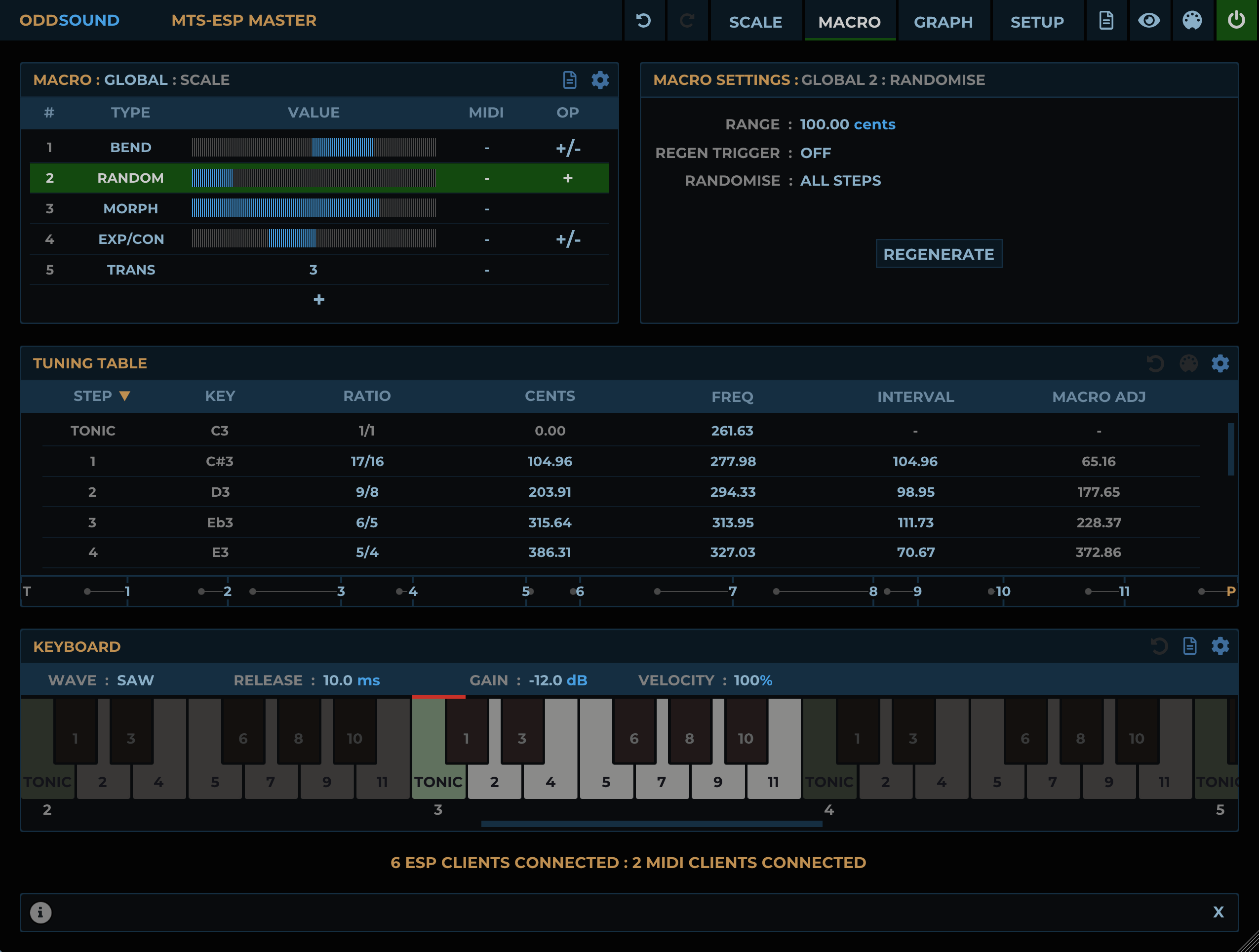
For a plugin that is already absurdly cheap for what it does at just $109, I was surprised to read they also offer a 50% student discount. This is a stunning and well-conceived piece of software that seems indispensable for anyone working with microtonality in a DAW.
Additional resources recommended by Brendan Byrnes (interview below)
Papers by Paul Erlich:
The work of Erv Wilson who “began to systematically explore equal divisions of the octave, coming up with scales of 17, 19, 22, and 31 tones that were especially pleasing. He has been a mentor to many composers and instrument builders. The goal of his research is to make exotic scales musically accessible to the composer and listener.”
Interview: Brendan Byrnes
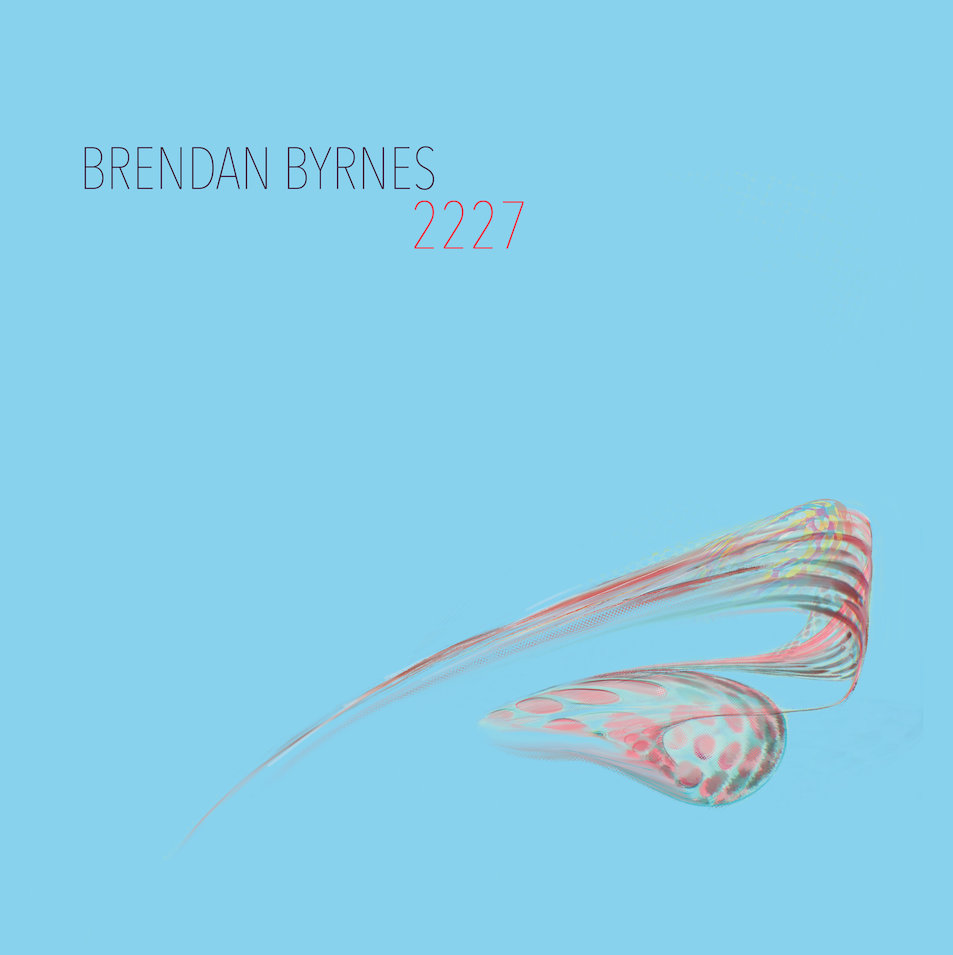
What follows is a recent interview with microtonal guitarist and composer Brendan Byrnes — an accomplished composer, multi-instrumentalist and mix engineer based in Los Angeles. He releases music under his own name and works as an audio engineer and sound designer at Stitcher.com.
PM: Can you talk a bit about your background as a musician?
BB: I started playing guitar, writing and recording music when I was a teenager with the help of a 4-track cassette recorder. My first guitar teacher got me into jazz pretty early on, but I was always more of a rock musician. Jimi Hendrix’s artistry was my biggest inspiration growing up. I’ve written orchestral music, electric guitar ensemble pieces, DAW-based electronic music, rock music, etc. I’ve composed for TV and film, but my own music has always been the main event which is almost exclusively microtonal these days.
PM: What drew you to the world of microtonality and when did you first start personally exploring it in your music?
BB: When I was 17 or 18, I learned about Glenn Branca’s microtonal music which had a huge impact on me. I did a few early microtonal experiments around then, but didn’t understand the scope of what was possible until about 2010, when I learned more about it in grad school. Things started clicking for me when I learned that there were all of these colorful notes, harmonies and melodies that could sound new and beautiful. Extreme dissonance is often the first thing people think of when microtonal music is mentioned, but I’m really interested in finding ways to explore the new consonant sounds available in these tuning systems. The lightbulb really went off was when I first heard what’s called an 11/8 interval, or super augmented 4th (example below). It’s right in between a perfect 4th and a tritone and it sounds gorgeous and perfectly in tune, especially once you’re used to its sound.
I started by creating my own somewhat clunky just intonation scales in Logic Pro and began writing music with them intuitively — I didn’t bother with any theory or math — I just used my ears. One of the best parts about writing with these new scales was that I had no idea what to expect. I have a good grasp on standard music theory, and I had sort of gotten to the point where I was frustrated with trying to squeeze new sounding harmonies out of regular 12 EDO. It was so great to feel like a beginner again and try to figure out the quirks of these new tunings.
PM: How has thinking in microtonal ways affected your writing and/or playing?
BB: Now that I understand that there is no perfect tuning system and that the concept of being “in tune” is a relative term, I feel very liberated when writing music. Having the ability to play different shades of familiar chords is one example — in many EDOs or in just intonation, there are different types of major and minor chords that sound surprisingly beautiful. There are sub-minor chords, super major chords, neutral chords, etc. that sound very fresh and very useful to my ears. They are maybe an acquired taste, but it’s exciting to try to find ways to use these under-explored sounds.
PM: What was the learning curve like in jumping from a traditionally fretted instrument to what you are currently using? What were the biggest challenges?
BB: It definitely took some time to get used to the new fretboard layout. I currently play a 22 EDO and a 27 EDO guitar, so it’s not like a standard fretboard with extra frets in between – it’s a whole new layout which is confusing at first. Before playing microtonal guitars, I had played in a lot of alternate open tunings, and I always enjoyed finding interesting chord shapes and scale patterns that only applied to that guitar tuning. That helped prepare me for dealing with a different fretboard layout. For the frets high up on the fretboard, you sometimes need to use “sarod-syle” fingering where you use the very tip of your finger and fingernail to get the note to speak. Some of the frets are so narrow that your finger sits over two at once, but you can still get the note to speak if you can find the sweet spot.
PM: What EDO is your favorite at the moment and why?
BB: 22 and 27 EDO are two of my favorites. 22 EDO is great because there are some somewhat familiar-sounding notes and chords in this tuning, but they’re tweaked in a way that sounds slightly exotic. There are also plenty of ways to sound very “xenharmonic” and strange. It has that 11/8 interval that I mentioned before, and it’s tuned very accurately in 22 EDO which I love. 27 is also a favorite of mine, especially how it sounds on the guitar. It offers a ton of chords and melodic potential that I find really pretty. When I first started, I loved the sound of just intonation, but I gradually learned to enjoy the unique sound worlds of different EDOs. Music made with strict just intonation often has a “fused-together” sound that is really cool but can sometimes start to sound a bit monochromatic to me. When things are slightly “out of tune” from just intonation (in the same way 12 EDO is) the sound can get really interesting and very colorful.
PM: Does your music revolve around the instrument at hand? In other words, how do you incorporate other sounds in your music (synth, bass, vocals, etc.) in a microtonal context?
BB: Yes, I think so. When I first got started, I was trying any tuning that seemed interesting, and so I was mostly relegated to the virtual instrument world. Using real instruments has become increasingly important to me, so I now mostly use tunings that I can play on my re-fretted guitars. I’ve also done a few pieces for re-tuned pianos. I have many songs where I sing, but I don’t always try to sing strictly in the given system — I just sing what feels right and most of the time the notes are in the harmony or chord — so I naturally stay in the lane of that particular tuning system.
PM: Is it possible to combine microtonal instruments and harmony with traditional tunings and instruments or are they mutually exclusive?
BB: You certainly can. 24 EDO is one option for doing this as it just adds a quarter-tone in between all of the 12 notes that you’re already familiar with. King Gizzard and the Lizard Wizard is a good example of a band that has successfully and methodically incorporated microtones into regular 12 EDO. For some people, it is a good starting point to stay in 12 EDO and spice things up by adding some microtones in between. Personally, I gravitate towards different EDOs or just intonation systems as they feel more like new universes of harmonic and melodic potential, rather than extensions of what is already familiar.
PM: Have you used any microtonal approaches in synthesis?
BB: Nothing beyond tuning software synthesizers and a couple of analog synthesizers to the tunings I like using. It’s very easy to retune software synths in Logic Pro, for example, with their tuning window, but you’re limited to 12-note scales. You easily change NI Kontakt instruments to whatever EDO you’d like in the script editor.
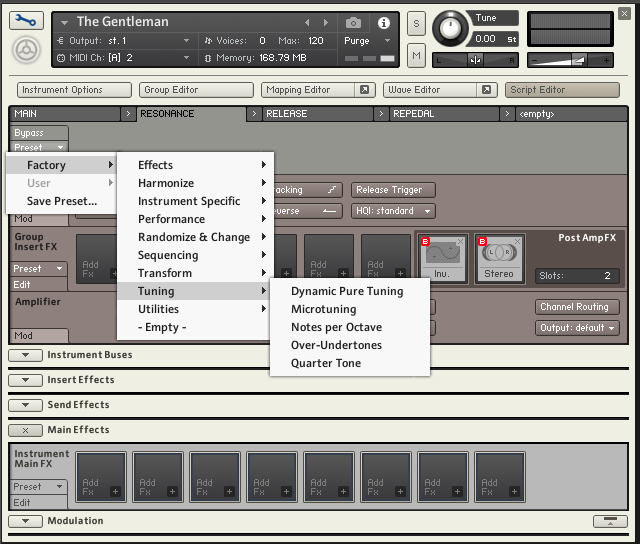
There are tons of soft synths that are very easy to retune with tuning scripts (generated by something like Custom Scale Editor). For example, Serum and Synthmaster are easily retuned with this method. For the analog synths, you need to have a multi-timbral synth and something like the H-Pi tuning box.
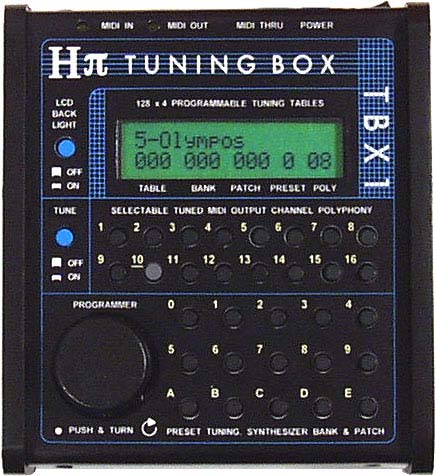
I had a band called “Ilevens” that played in all 22 EDO and our keyboardist just played on a regular 12-note keyboard with a DSI Tetra hooked up to an H-Pi tuning box, and it worked great, aside from the regular piano layout not lining up with the 22 notes we were using. Using piano keyboard layouts is another challenge for microtonal music-making, but there are other solutions out there like the Lumatone keyboard for example.
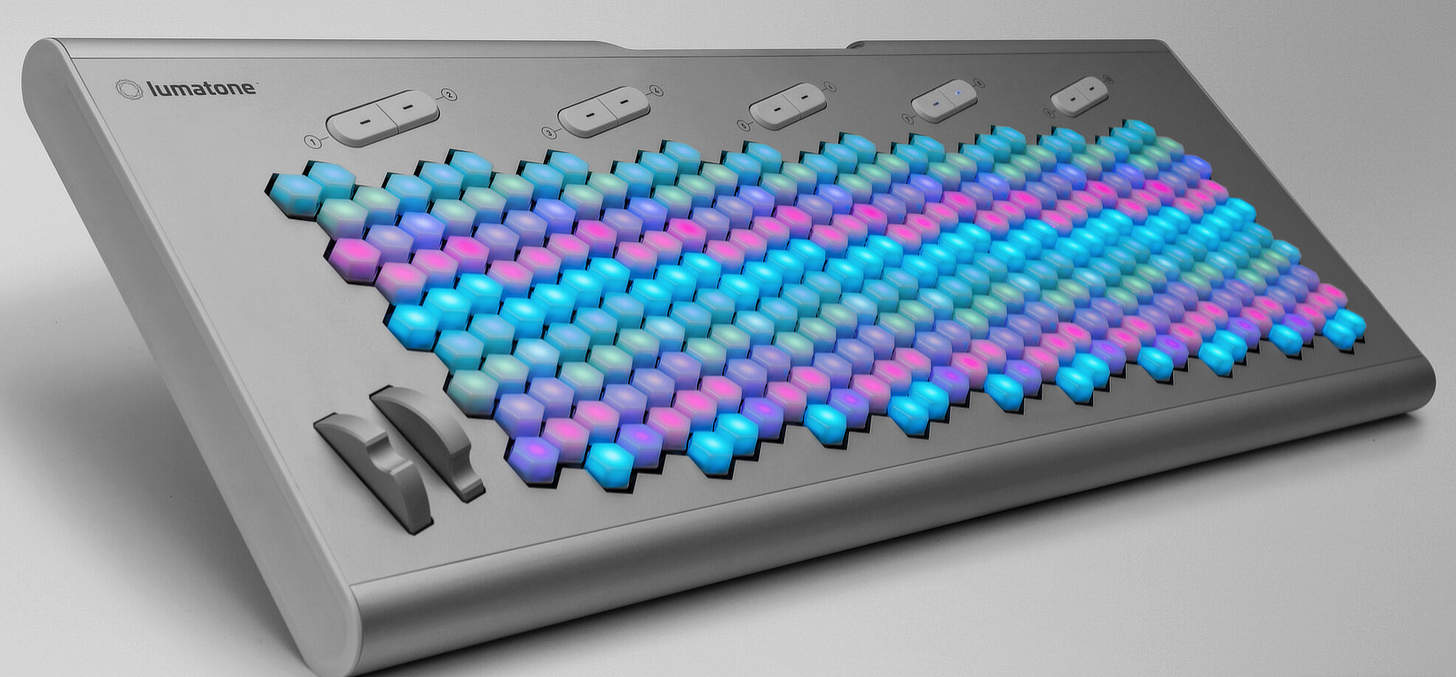
PM: Some of the mathematics behind this stuff can be intimidating. Can you recommend a source for people interested in digging deeper that is relatively accessible for the average musician or producer?
BB: The math and theory can be daunting, but just like all music, you can play and write it without any understanding of the theory and work completely intuitively if you prefer. That being said, I would strongly suggest gaining a basic understanding of the harmonic series and how just intonation works. It is the basis for understanding tuning in general and for how different temperaments and EDOs work. I’d suggest going to some of the microtonal or xenharmonic groups on Facebook — there are usually great discussions going on there and everyone is very willing to help educate anyone who’s interested. The Xenharmonic Wiki is also a good place to start. I have a video on YouTube called “Microtonal Music Tutorial (Xenharmonic)” which I made for beginners, and it explains the basics of the harmonic series and just intonation.
PM: Do you think microtonality has a place in the mainstream?
BB: I’m not expecting any significant use of microtones to show up in any mainstream pop music anytime soon, but to see bands like King Gizzard and musicians like Jacob Collier start to embrace microtones a little bit is encouraging. The thing about microtones and xenharmony is that it doesn’t have to be dissonant, so I think it’s totally possible to create popular music in a tuning system other than 12 EDO. If we’re talking about very far into the future, I wouldn’t be surprised if microtonality worked its way into mainstream music theory courses and becomes more common in types of music that really push the bounds of music theory. It really does seem to be getting more attention these days. I’m hoping there’s a kid somewhere who has already been introduced to microtonality and at some point will come out of the woodwork or start a band that’s making truly mind-blowing microtonal music that really brings microtonality the attention it deserves.
PM: Aside from your music, can you recommend other artists using microtonality for someone that wants to familiarize themselves with the possibilities?
BB: Sevish is one of the more popular artists. His music is a great place to start if you’re into electronic music. Toby Twining’s piece the Chrysalid Requiem is absolutely brilliant if you’re into choir music. Ben Johnston’s String Quartets are worth a listen for everyone. Other greats are Elaine Walker/ZIA, Mercury Tree, Dolores Catherino, Last Sacrament and Zhea Erose. There are many more, but those are some great artists to start with.
PM: What are the next steps for you? Do you ever plan on returning to 12 EDO or is there no turning back?
BB: Learning about microtonality and its potential was absolutely the most significant and inspiring thing to ever happen in my musical life. I’m pretty certain that I’ll be exploring microtonal music for the rest of my days. I’ve always wanted to create music that sounds like it’s coming from another world or from a completely unique place, and using microtones has helped me get closer to that goal. I’ll always love making music in 12 EDO though. I have to admit, it is slightly less interesting to me, but it’s always a challenge to make good music in any tuning. 99% of the music that I listen to and love is in 12 EDO. We just need more good microtonal music, so if you’re reading this, please give it a shot!
PM: Thanks for sharing your thoughts, Brendan!
Brendan’s music can be found at Bandcamp and Spotify.
Check out my other articles, reviews and interviews
Follow me on Twitter / Instagram / YouTube





